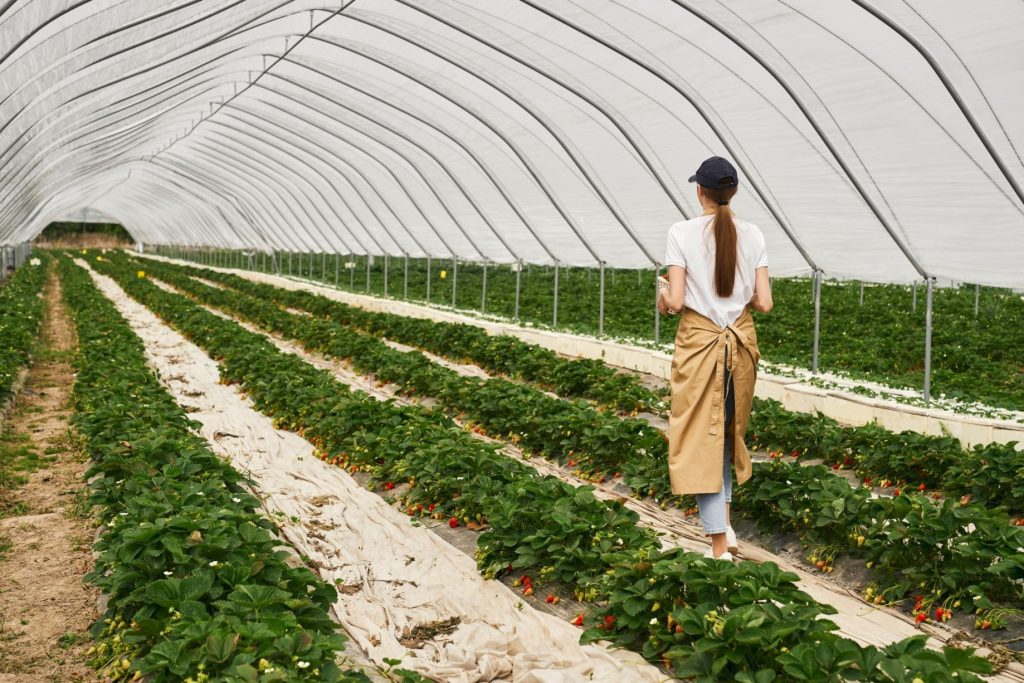
In this dynamic realm of modern agriculture, multi-functional farming has gained prominence. Managed farmland is no longer solely dedicated to crop cultivation; instead, it has become a dynamic space where crops, livestock, and forestry seamlessly integrate. Sharanya Farm managed farmland near Mysore Road implements this holistic approach not only to maximise the use of available resources but also to promote sustainability, resilience, and diverse revenue streams for farmers. In this blog, we’ll explore the benefits and principles of multi-functional farming and its transformative impact on managed farmland.
Diversifying Crops
Traditionally, farms were often monocultures, focusing on one or two crops. However, multi-functional farming emphasises the diversification of crops. By cultivating a variety of plants, farmers reduce the risk of crop failure due to pests, diseases, or adverse weather conditions. Different crops also contribute to soil health by varying nutrient requirements and enhancing biodiversity.
Introducing Livestock Integration
Livestock integration is a key component of multi-functional farming. Incorporating animals, such as cattle, goats, or chickens, into managed farmland systems provides various advantages. Livestock can contribute to natural fertiliser production through manure, help control weeds, and create additional revenue streams for farmers through the sale of meat, dairy, or eggs.
Livestock deposit manure while grazing, and the advantages of manure on farmland have been known for thousands of years. Research has already shown the impacts of manure. Also, livestock adds manure to soils to increase organic matter and soil microorganisms; increase phosphorus, potassium, calcium, and magnesium in topsoils; and increase nitrate nitrogen, calcium, and magnesium in subsoils. However, as prices of fertiliser rise, economics may favour the use of manure, particularly if that manure is applied directly by the animals as they are grazing in a controlled way. Even if the economics do not favour using manure, however, it does afford long-term health benefits to the soil, as discussed earlier.
Soil Health Improvement
Managing farmland with a multi-functional approach prioritises soil health. Crop rotation, cover cropping, and integrating livestock contribute to nutrient cycling and reduce soil erosion. Healthy soils support robust plant growth and contribute to the overall resilience of the farming system. If you are looking for the best-managed farmland near me, then you can choose Sharanya Farm. Here the advanced farming practices enhance water retention and reduce the need for synthetic fertilisers, promoting environmentally friendly farming.
Integrated Pest Management
In multi-functional farming, the focus shifts from relying solely on pesticides to adopting Integrated Pest Management strategies. This approach includes using natural predators, rotating crops, and maintaining a balanced ecosystem to control pests. By minimising reliance on chemical inputs, farmers promote ecological balance and safeguard the long-term health of the farmland.
Sustainable Resource Management
One of the key principles of multi-functional farming is the sustainable management of resources. This includes optimising water usage, minimising waste, and incorporating renewable energy sources. If you are in Bangalore and searching for agricultural land near me, then Sharanya Farm will be the best choice for you. By adopting sustainable practices, here we not only reduce their environmental footprint but also ensure the long-term viability of our managed farmland.
Economic Resilience and Diversification
Multi-functional farming introduces economic resilience through diversification. Instead of relying solely on income from a single crop, farmers can generate revenue from livestock, timber, and various crops. This diversified income stream provides a buffer against market fluctuations and increases the overall stability of the farming operation.
Community and Ecosystem Benefits
The multi-functional farming model extends its positive impact beyond the farm gate. By promoting sustainable practices and biodiversity, managed farmland becomes a supportive ecosystem for local wildlife. Additionally, engaging in community-supported agriculture (CSA) or farm-to-table initiatives connects farmers directly with consumers, fostering community relationships and promoting local, sustainable food systems.
Carbon Sequestration and Climate Resilience:
Agroforestry and silvopasture practices within multi-functional farming contribute to carbon sequestration. Trees and perennial crops help capture and store carbon, mitigating the effects of climate change. This not only benefits the global environment but also enhances the resilience of the farming system to extreme weather events.
Summary
Multi-functional farming in managed farmland is a transformative approach that aligns agricultural practices with ecological principles. By embracing diversity, integrating livestock, and incorporating forestry, farmers unlock a host of benefits, from enhanced soil health to economic resilience. If you are looking for farms for sale near me, look no further than Sharanya Farm. Here the holistic approach not only ensures the long-term sustainability of agriculture but also contributes to broader environmental and community well-being. As we navigate the challenges of a changing world, the principles of multi-functional farming illuminate a path towards a more harmonious and sustainable future for agriculture.
Here we discussed traditional monocultures to a holistic farming model that incorporates a variety of crops, livestock, and forestry. Ultimately, the multi-functional farming model emerges as a sustainable and harmonious approach, promoting economic stability, ecological balance, and resilience in managed farmland. If you want to explore more about our managed farmland, get in touch with us.